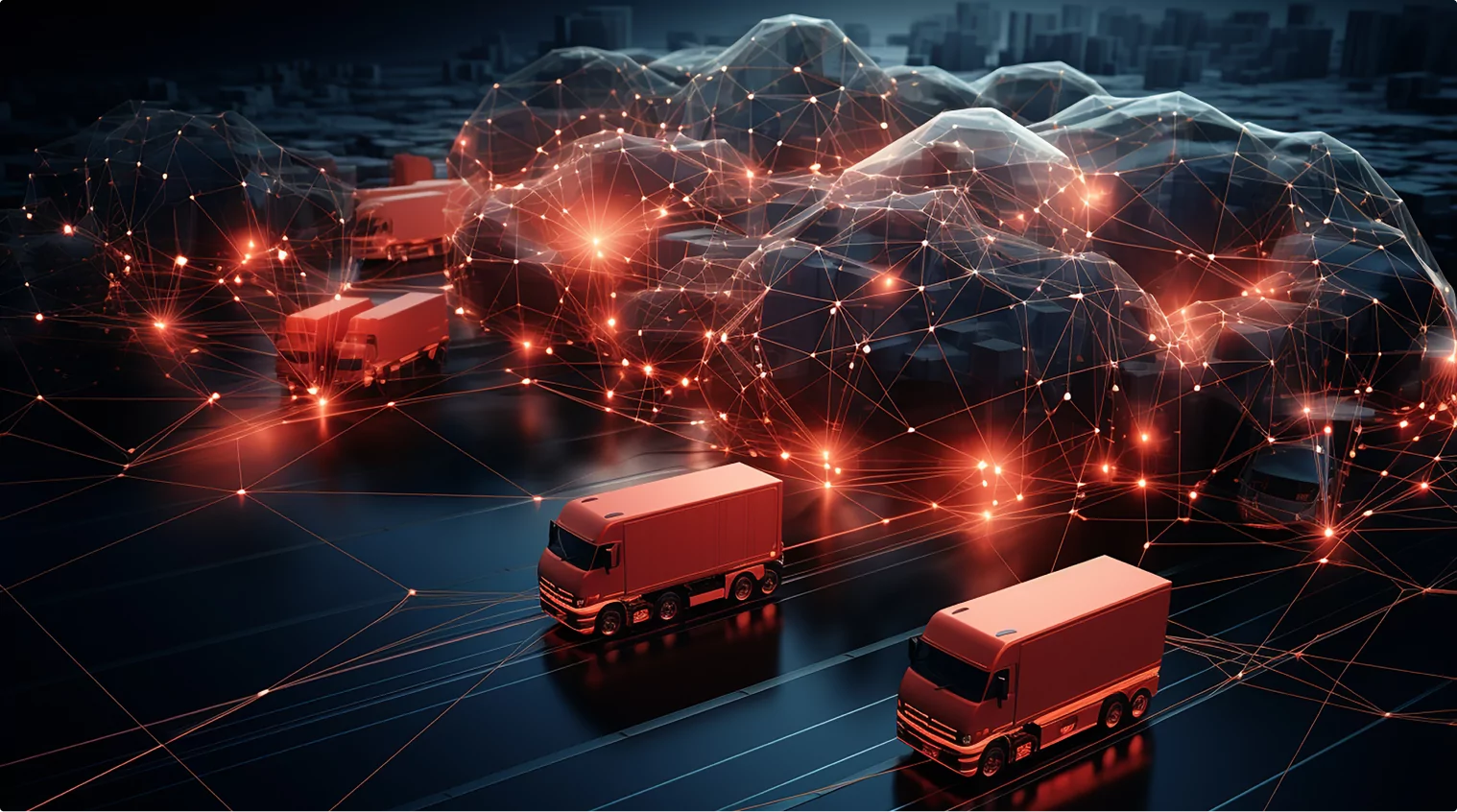The realm of transportation faces a range of challenges that can impede the seamless flow of goods. Beyond the visible hurdles like subpar infrastructure, there are less apparent constraints that can significantly affect the efficiency of logistics and transportation networks. This complexity makes it a challenging task to accurately predict delivery times and gauge fuel consumption, both of which are pivotal for the daily operations of transportation companies.
Here artificial intelligence steps in with sophisticated predictions that hold water. AI is capable of handling lots of factors and understanding how they interconnect. Moreover, it can foresee problems before they even happen. Let’s delve into how AI works and why integrating cutting-edge algorithms into freight transportation is an endeavor well worth pursuing.
What is route optimization?
Route optimization is the process of finding the most efficient, often meaning the fastest and cost-effective route for transporting goods. It involves analyzing the fixed factors like distance, road conditions, route restrictions (weight and height limits), bridges and speedways, and vehicle capacity but also dynamic issues such as:
- traffic conditions
- road closures and construction works
- traffic accidents
- custom and border delays
- weather conditions
- vehicle breakdowns
- delivery windows.
Route optimization may also involve the integration of various modes of transportation, such as combining road and rail transport, to attain optimal efficiency.
The goal is to determine the optimal route that minimizes travel time, fuel consumption, and overall transportation costs while maximizing the number of deliveries and freight capacity.
Why is route optimization so important?
Route optimization is a strategic tool that directly impacts a company’s bottom line and ability to provide top-notch customer service. Here’s what you can gain:
Cost efficiency
Optimized routes minimize the distance traveled and reduce fuel consumption, lowering transportation costs. It is especially vital as fuel and labor costs constitute a significant portion of overall logistics costs.
Time savings
Efficient routes reduce travel time, leading to faster deliveries and improved customer satisfaction. It also means that vehicles spend less time on the road, which can lead to fewer maintenance issues and longer vehicle lifespan.
Better resource utilization
By selecting the most efficient routes, companies can use their fleet and driver resources better and avoid empty runs. It means vehicles can complete more deliveries within the same time frame, increasing operational efficiency.
Reduced risk
With route optimization, drivers can avoid or better manage unexpected events like road accidents, closures, or adverse weather conditions. It leads to more timely deliveries and fewer traffic accidents.
Competitive advantage
Last but not least, transportation companies that deliver goods faster and at a lower cost gain a competitive edge in the market. Shippers are more likely to choose a company that offers reliable deliveries at reasonable rates.

How does route optimization work and how is AI revolutionizing route optimization in logistics?
Traditional, manual route optimization involved a labor-intensive approach to planning and organizing transportation routes, relying on the logistic operators’ knowledge and experience. It involved studying maps, traffic patterns, and weather forecasts. Once a route was chosen, it would often remain unchanged for the day or even longer, regardless of real-time changes like traffic or weather conditions. The process was time-consuming and prone to errors.
Conversely, state-of-the-art route optimization systems use complex AI algorithms to analyze multiple variables and constraints to provide the best possible routes. The process is highly effective thanks to the following:
Data gathering
First, AI systems collect real-time data from various sources, including GPS, traffic updates, weather conditions, and historical route information.
Advanced AI algorithms
With AI, you’re not dependent on a single forwarder’s knowledge. Sophisticated algorithms can process vast amounts of data and variables (see also: data science and big data tools), far beyond what traditional methods can handle.
Real-time adjustments
Unlike conventional methods that rely on predefined routes, AI-driven systems can adapt in real-time. They consider live traffic updates and adjust routes on the fly to avoid congestion, accidents, or unexpected road closures.
Predictive analytics
AI uses historical data to anticipate potential traffic patterns, weather conditions, and other factors that might impact the transportation process.
Machine learning
AI systems not only analyze the data provided but also learn from past outcomes. Over time, they improve their predictions, adjusting their algorithms accordingly.
Augmented reality
The most advanced systems can also utilize augmented reality to provide AR routing for various transportation modes. For example, in NeuroSYS, we’ve built a real-time navigation system with an innovative routing algorithm used at sea, applicable in all sorts of transportation. Read more about our AR-powered app.
Wrap-up on route optimization
AI in logistics revolutionizes route optimization by providing accurate, scalable, and adaptable solutions. It enables transportation companies, forwarders, and shippers to navigate dynamic challenges and achieve higher operational efficiency, customer satisfaction, and sustainability. Get in touch with us today to discover how AI can revolutionize your logistics company!





